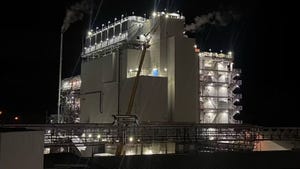Plastic bridges, popular in Europe, may be catching on in U.S.
April 18, 2016

The low-lying Netherlands is a country shaped by dikes and canals, which make bridges essential for getting around. As these wooden structures wear out, municipalities are replacing them with plastic bridges. Rotterdam’s first plastic bridge was installed in 2009, made by FiberCore Europe (Rotterdam, Netherlands), according to exhibition organizer and media company Materia. FiberCore’s proprietary fiber-reinforced polymer technology, originally developed for aerospace applications, is now applied to bridges for pedestrians and cyclists.
|
Composite bridge for cyclists installed by FiberCore Europe near Schiphol airport. |
Rotterdam officials say plastic bridges are easier to install and more durable than wood. Cities on this side of the Atlantic could also avail themselves of such advantages, but economic factors might be holding them back. Lumber is abundant and cheap in the United States compared to Europe. Though plastics in construction have a longer lifespan than wood, they come with a higher up-front cost, explains Kim Holmes, Senior Director, Recycling and Diversion at SPI: The Plastics Industry Trade Association (Washington, DC). “The return on investment might happen more quickly [in Europe] than here,” she told PlasticsToday.
The United States set forest products export records in fiscal 2015, according U.S. Department of Agriculture figures. Despite lumber’s abundance in America, plastics are finding a place in bridge construction, where they are used in reinforcement rods, nonskid surfaces and replacement decking, SPI says in its Plastics Market Watch report on building and construction. Though bridges fashioned entirely from plastic are uncommon in the United States, the material has a longer history in U.S. construction as structural lumber, Holmes says. Plastic lumber is used in decks, patios and benches. The material is also an ideal choice for marine applications because it holds up well to moisture. But plastics can also be made with the structural strength to handle vehicular traffic.
Axion International (Zanesville, OH) stakes claim on the first U.S. roadway bridge constructed entirely from plastic: The bridge in York, ME, opened in 2011. Axion composites, made entirely from recycled plastic, have been used for both U.S. and European bridge construction. Economic factors could shift the balance toward more of these bridges in the United States. Declining plastic prices could support momentum for the material in structural applications, Holmes says.
About the Author(s)
You May Also Like



